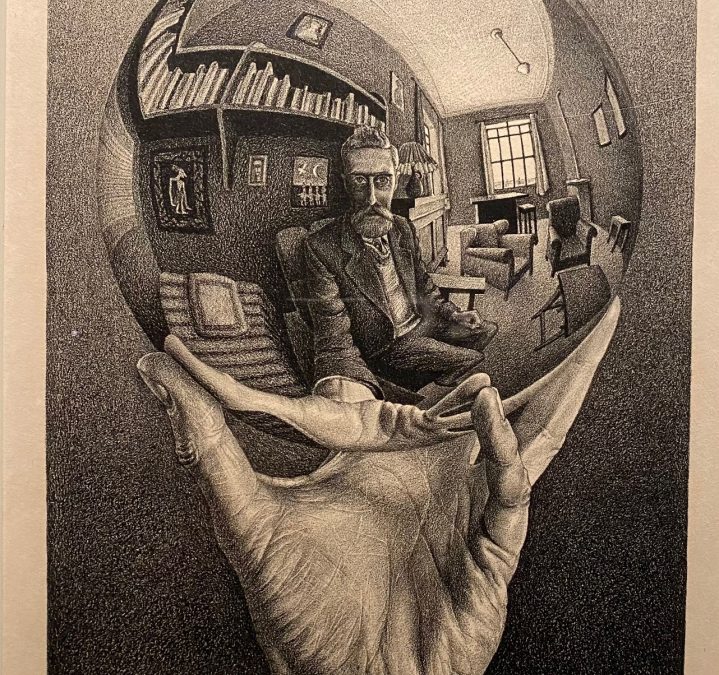Escher at Palazzo Bonaparte in Rome, from October to April 2024
Thinking of Escher and his ties with the city, another exhibition in Rome was utterly due. The artist moved to the capital in 1923 – to celebrate the 100 years anniversay Palazzo Bonaparte hosts his most complete exhibiton by now.
In his “Hand with reflecting sphere” (1935) one can see reflected his studio at 122, in via Poerio; an elegant building in Rome’s Monteverde district, where he and wife Jetta lived, on the third and fourth floor.
Maurits Cornelis Escher (1898-1972) was born in Holland and lived in Rome from 1923 to 1935. He decided to leave the capital because of the approaching of Fascism. Nonetheless, the years he spent there were very prolific. He used to stroll around in his neighbourhood, passing by the beautiful Villa Sciarra and Villa Doria Pamphilji, working during night, hanging around with only a little chair and a lamp in his pocket to help him. This exhibition, which displays about 300 works of the artist, shows the complete production of his roman period and his very first drawings, such as The Sunflower and Fireworks, clearly inspired by Art Nouveau, which he learnt from his first teacher S.J. De Mosquita in Holland, and also by the japanese artist Kanagawa.
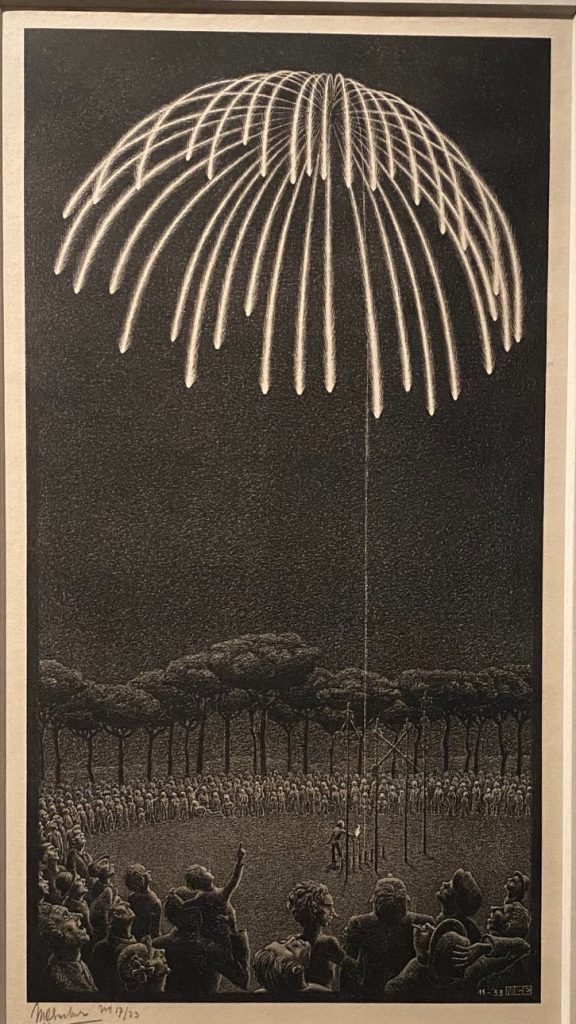
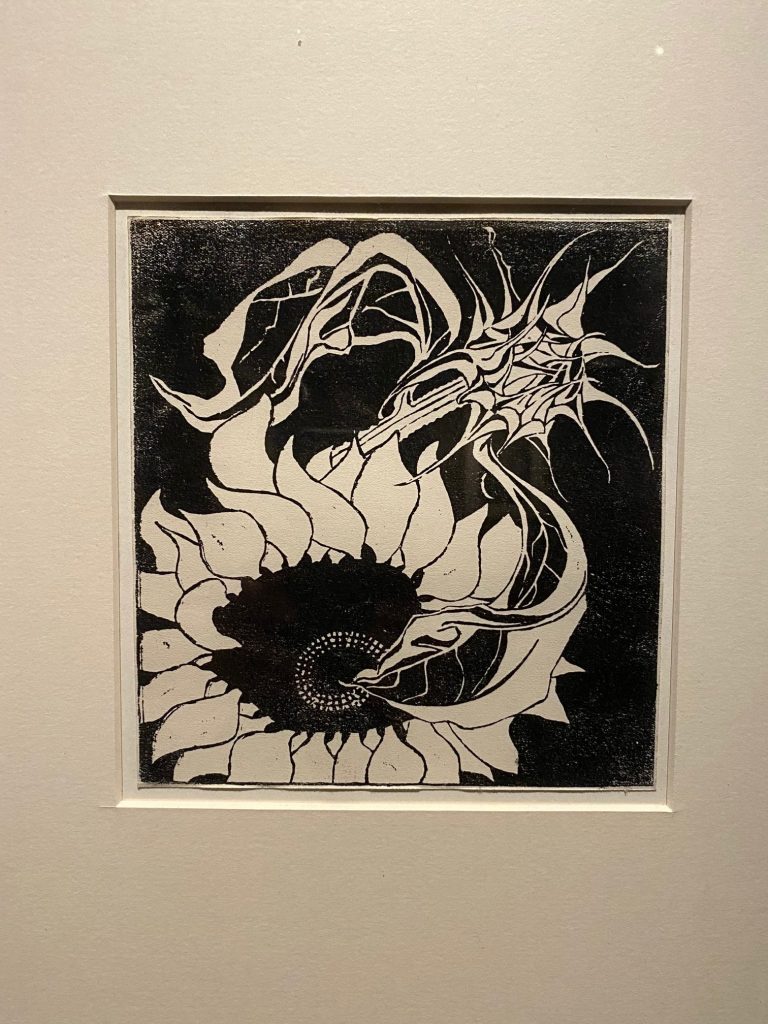
(Fireworks, Sunflower)
The palace harmoniously hosts them in pictures and with projections on its own walls, ceilings and frescos.
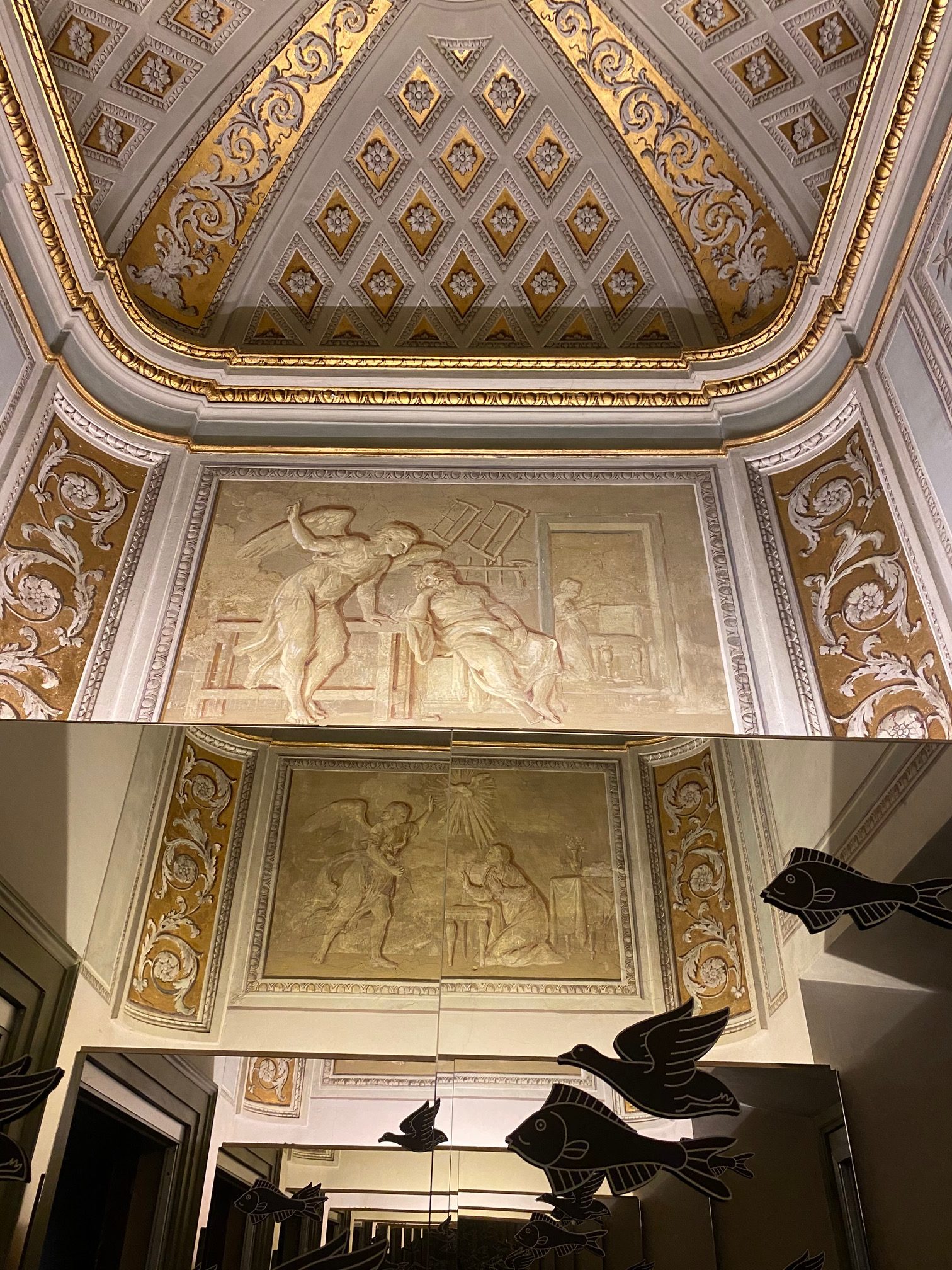

(Palazzo Bonaparte, Escher Exhibition)
This is an author whose works we’ve always known even before we’ve learnt about him. His inner world belongs to our collective memory through iconic films inspired by his art, such as Labyrinth, The name of the Rose or Harry Potter. We can hardly figure out a world without his artistic touch. In music, he contributed to Pink Floyd, Pearl Jam and Bauhaus’ covers, but refused Mick Jagger’s one because he considered him too cheeky.
Escher was a travel artist, who was strongly influenced by his trips to Italy but also to Spain. In Granada he visited the Alhambra, whose moresco style inspired his tesselations.
He started to draw more intimate images once he left Rome for Switzerland and Belgium. In these places he experienced a very melancholic mood, missing the Italian landscapes: Rome, Sicily, Tuscany, but also Calabre, Molise and Abruce… so he concentrated himself on what was inside him.
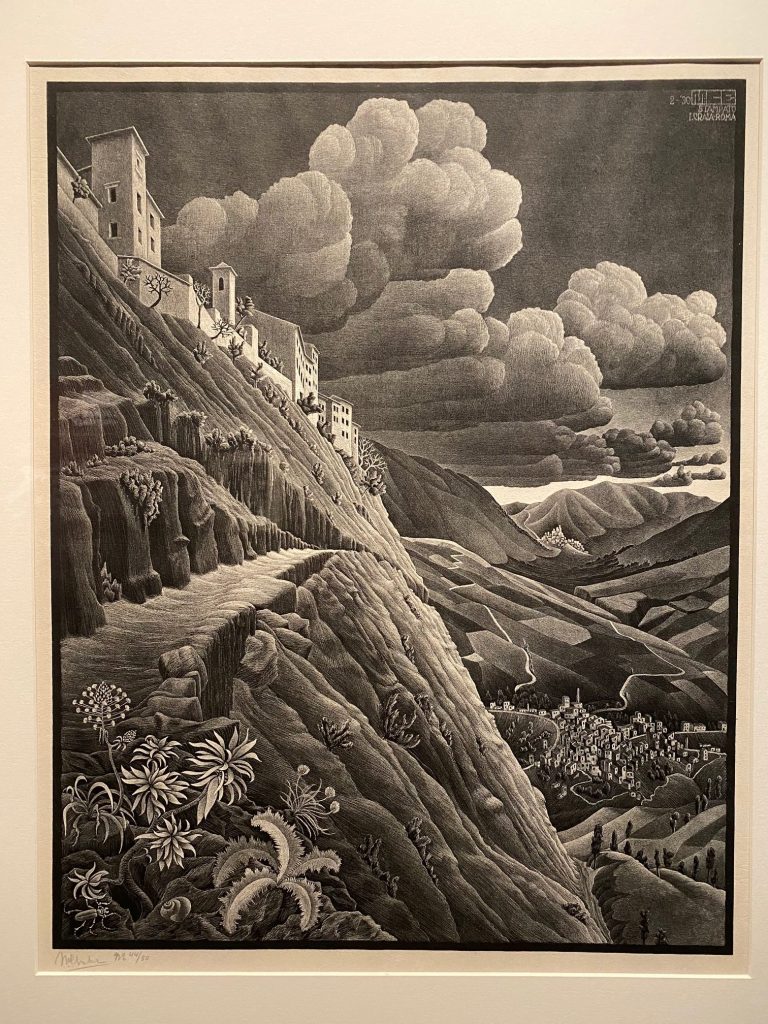
(Italian Landscape)
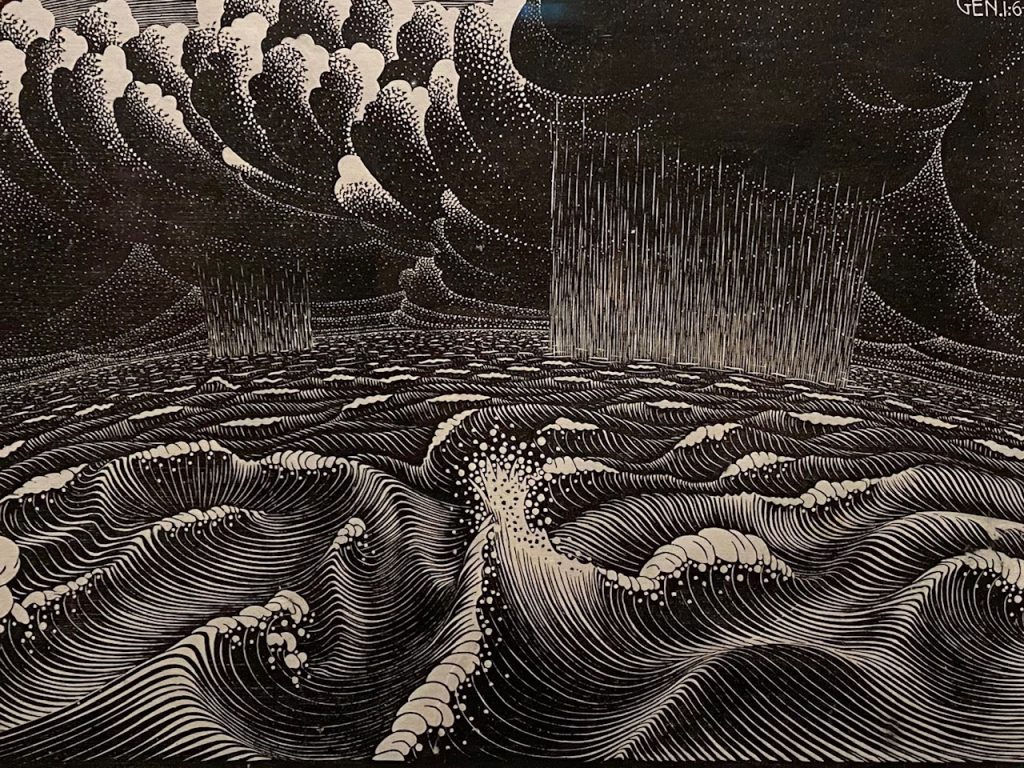

(The Creation of the World, Puddle)
In works such as the Emblemata (images with adages) he took inspiration from the medievalist artist Hieronymus Bosch, while in Metamorphosis (1937), a brilliant mixture of Art nouveau and Futurism melted with scientific, geometrical visions, he swipes from one world to another finding impossible connections.
Although this could be seen as atypical, since Giotto and his perfect round, we should know that mathematics and art are not so distant each other as they could seem. He alternates xiloghaphy, lithography, wooden cuts and itching to create different perspectives. “Why a floor can’t be a ceiling?”, he says, “painting is a deceit itself after all”, as it is a two dimensional plan pretending to represent three dimensional objects. A concept he often expresses through the metaphor of the mirror.
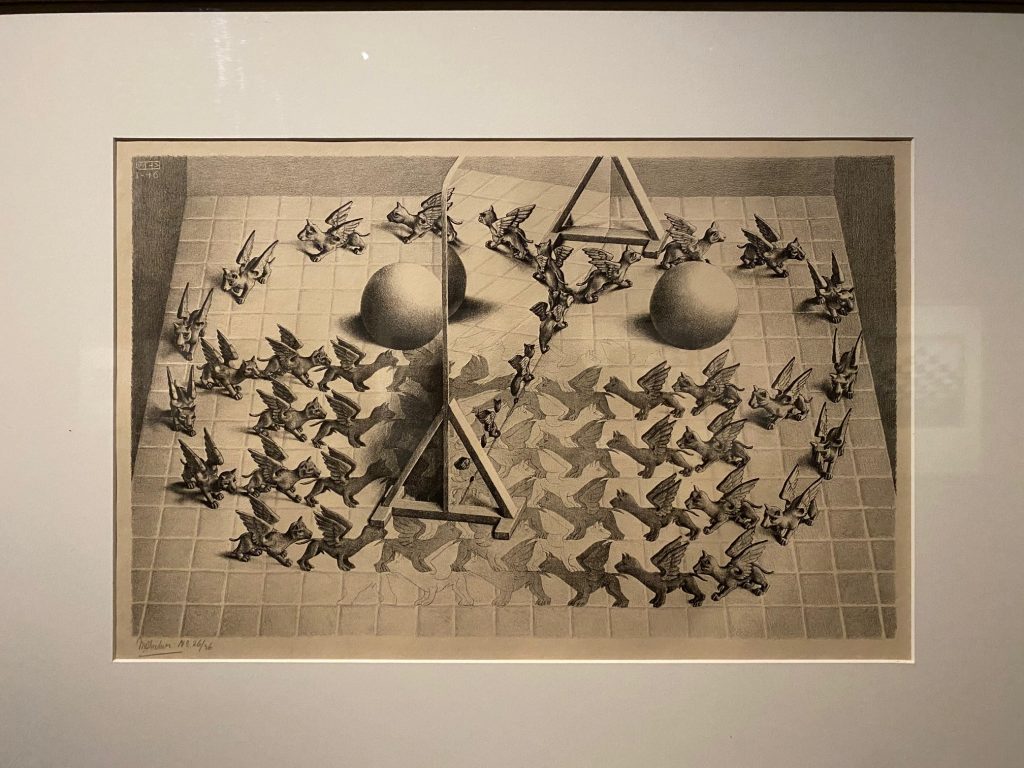
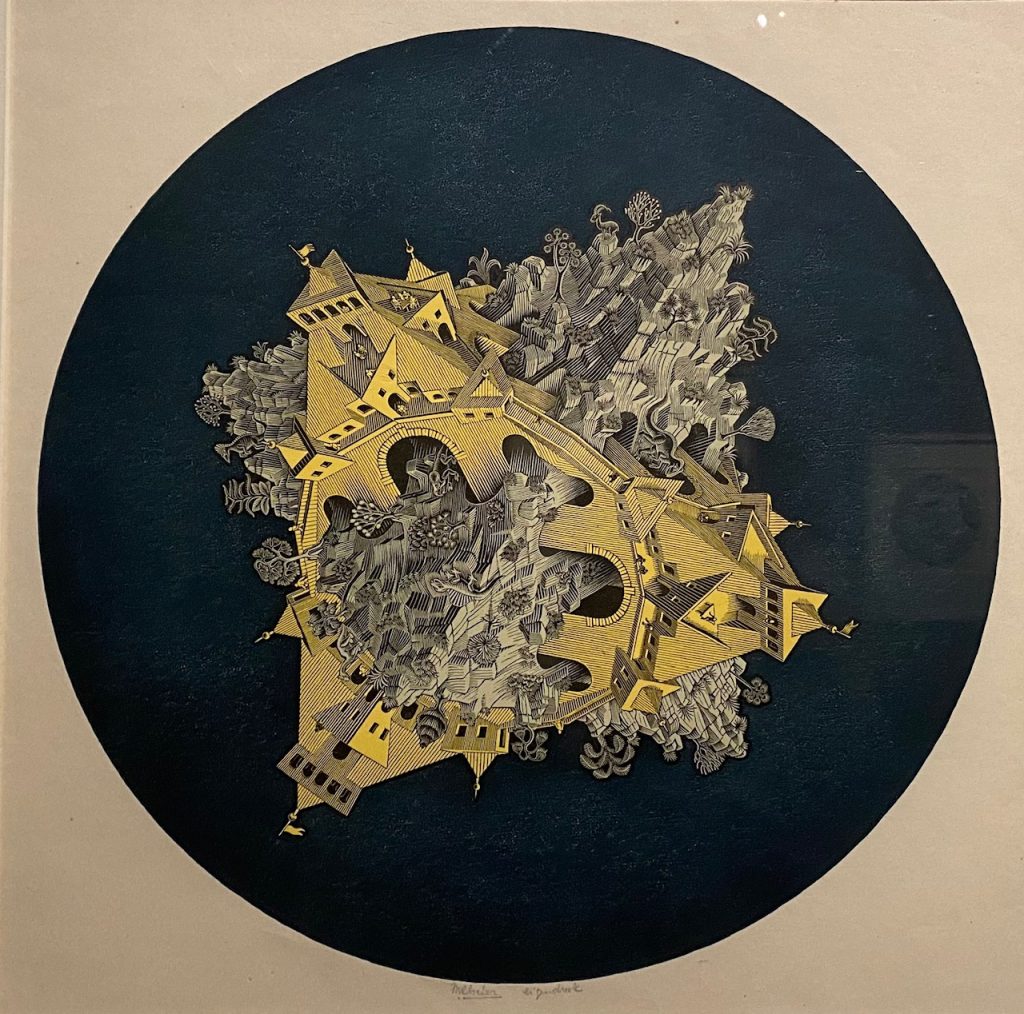
(Magic Mirror, Double Planetoid)
Dizziness and alienation, this exhibition has been very involving through installations such as interactive spheres. We can see ourselves projected in the typical “Buccia leitmotif”, such as in Bond of Union and play with this, since art is nothing but a “very serious game.”
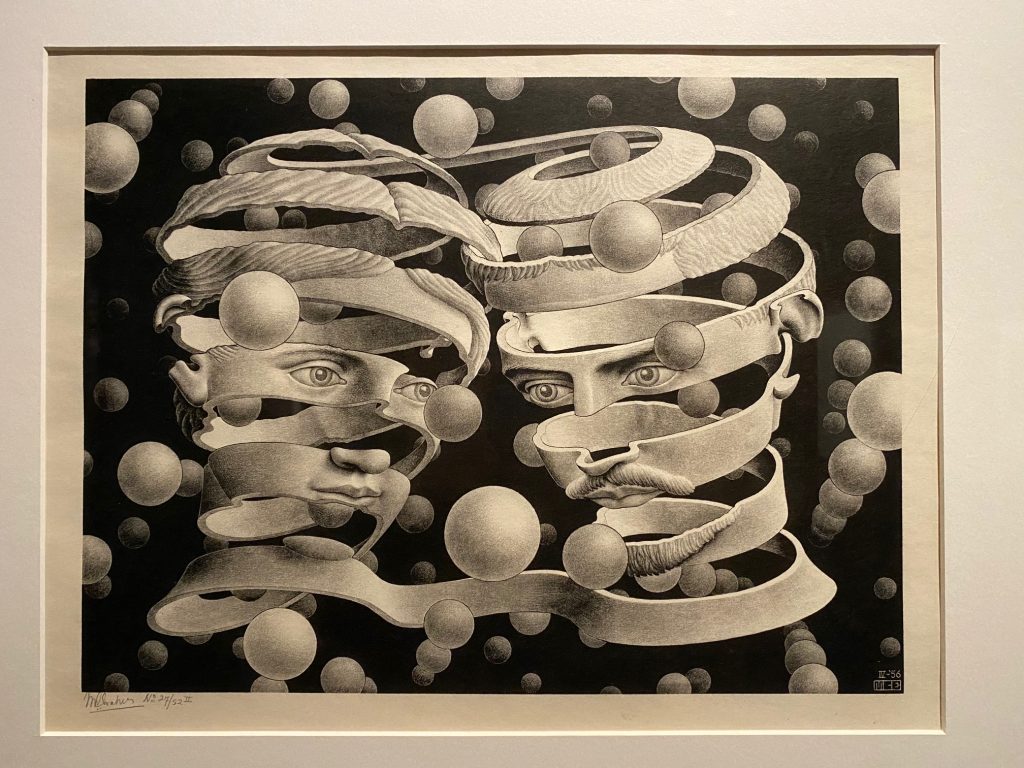
(Bond of Union)
Do not hesitate to sit and sip a good drink in the cosy bar of the palace.
Consider a couple of hours for visiting.
Curated by Federico Giudiciandrea and Mark Veldhuysen, the exhibition is organised by Arthemisia in collaboration with M. C. Escher Foundation.

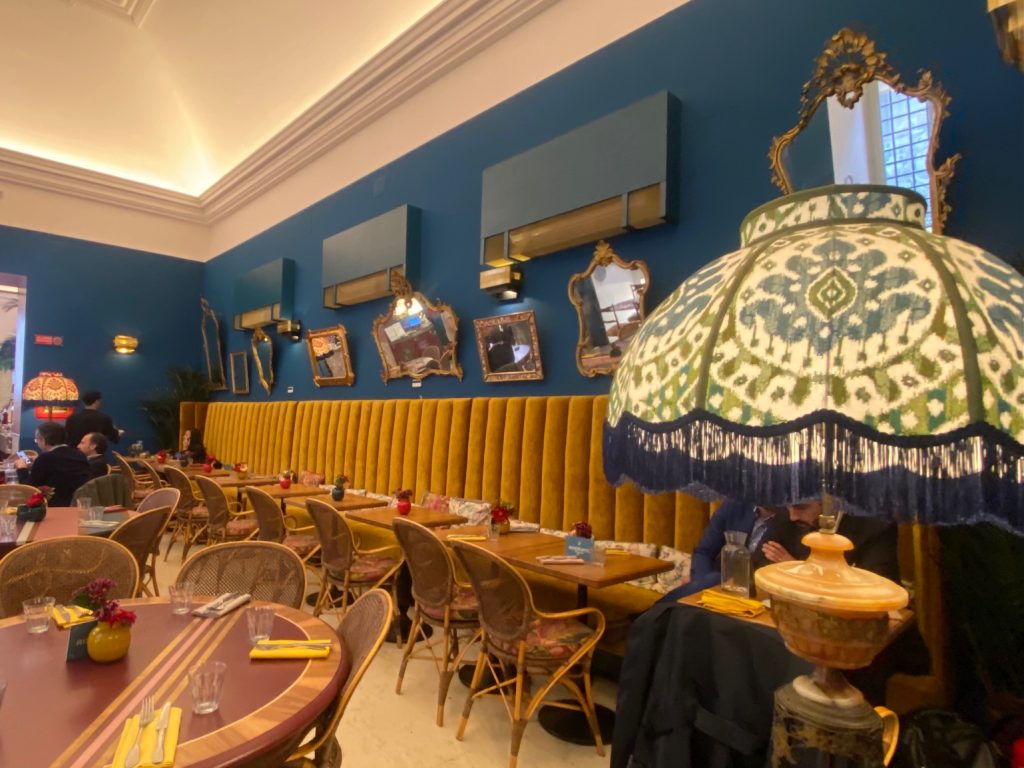
Credits: Zelda
